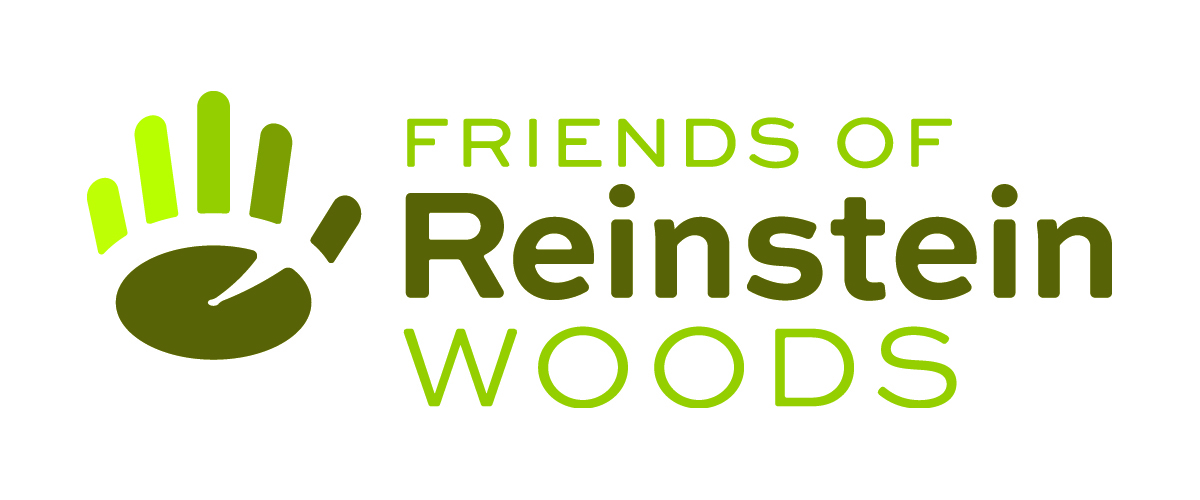Tag Archives: painted turtle
National EE Week Part 3: Turtles!
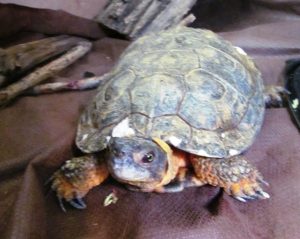
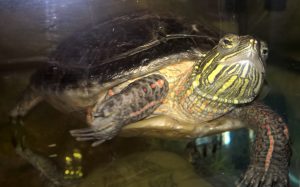
Meet Clementine and Clover, Reinstein Woods’ newest permanent residents! After their owner passed away, these turtles were found under a rug in a home in Clarence. Because both of these turtles are native to New York State, it is illegal to possess them without a permit. Because they had been living in captivity for an unknown period of time, it was not safe to release them into the wild. Thus Reinstein Woods adopted them to serve as ambassadors for their species.
Clover is a female painted turtle. (To identify the sex of a turtle, look at the shape of the bottom shell—flat for females; concave for males).
Named for the yellow and red markings on their head, legs and edge of their shell, painted turtles are the most common turtle at Reinstein Woods. The lower shell of Clover has a dark central blotch, which indicates she is a subspecies called the Midland painted turtle. (The Eastern painted turtle has no mark).
On a walk through Reinstein Woods, look for “shiny black rocks” on logs laying in Lily Pond and Green Heron Pond. Those “rocks” are actually painted turtles basking in the sun. Sometimes the turtles will stack right on top of each other!
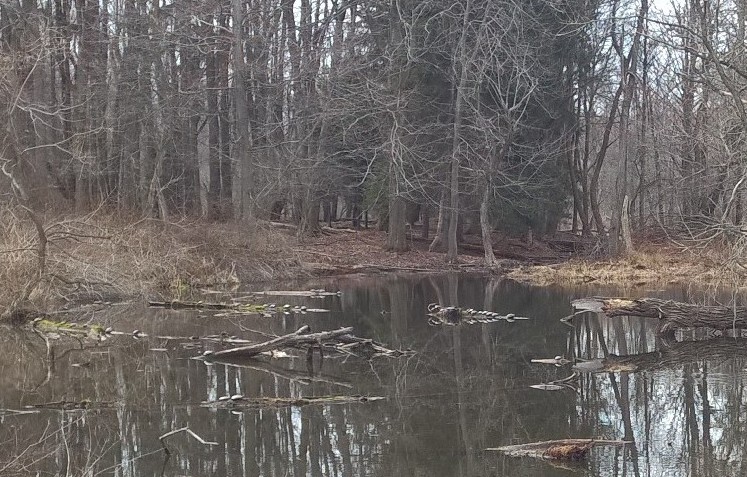
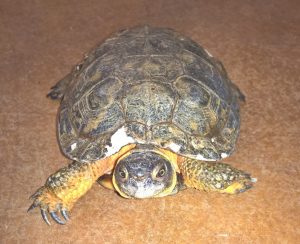
Clementine is a wood turtle. Wood turtles take their name from their preferred woodland habitat, as well as the prominent rings (annuli) on their back that remind some of wood. These colorful turtles spend most of their time wandering the woods along the edge of streams, searching for berries, mushrooms, insects, worms, and small aquatic creatures to eat.
Wood turtles are a Species of Special Concern in New York State. “Special Concern” means an animal could become threatened or endangered in the future due to several factors. In the case of wood turtles, habitat destruction is a major concern. Records from the herp atlas, an effort to identify where reptiles and amphibians live in New York State, indicate that wood turtles are uncommon in most of Western New York, but have a broader distribution downstate. To learn about efforts to help wood turtles deal with habitat disturbance downstate, check out the “Tiny Turtle Bridges” video from NPR’s Science Friday.
And be sure to stop by the Reinstein Woods’ classroom to meet Clementine and Clover on your next visit to Reinstein Woods!
Nature Sightings
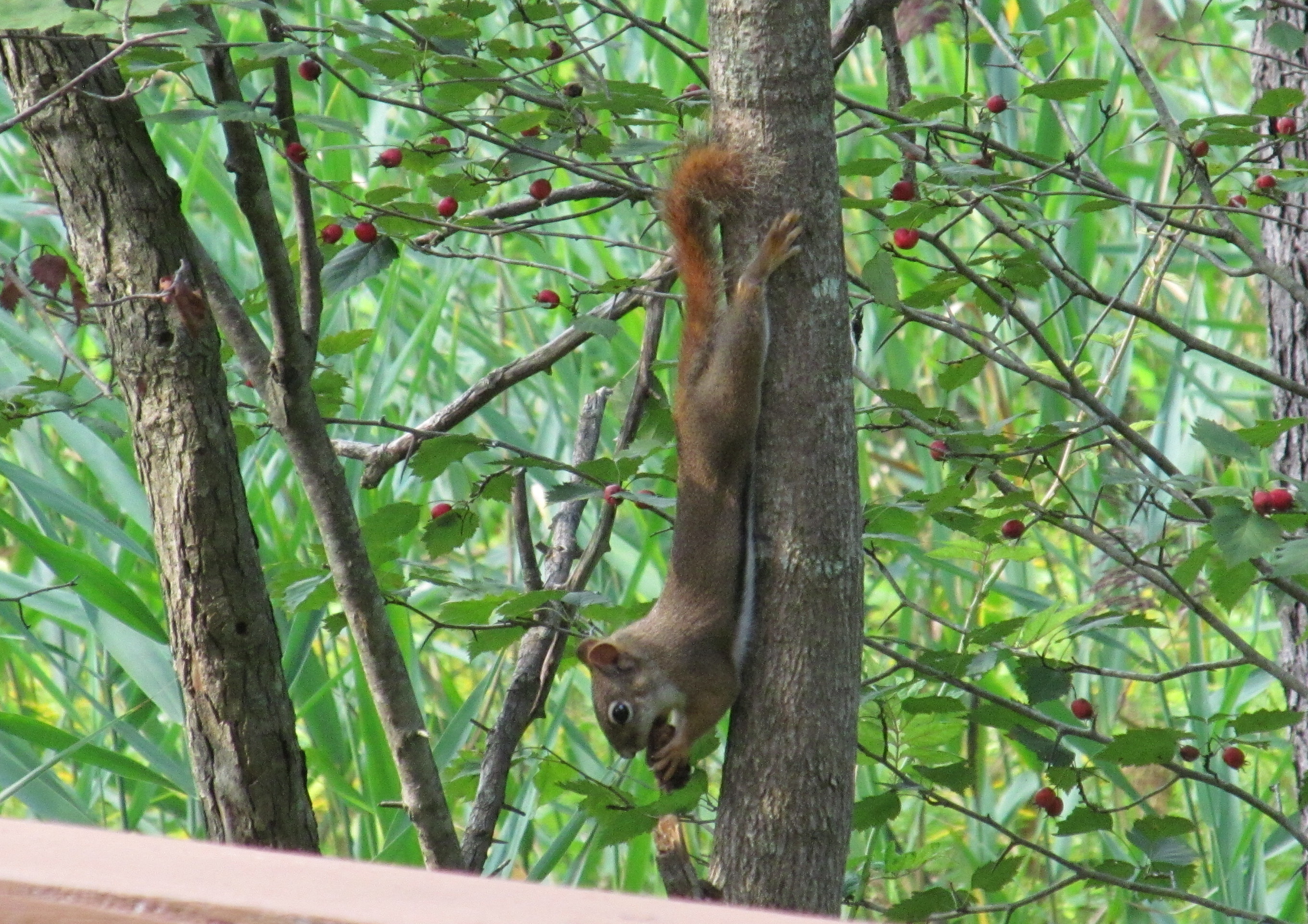 Don’t let the peeping call of spring peepers fool you, it isn’t spring. Signs of autumn continue to creep in. The racks on white-tailed deer bucks are getting large and they will soon be rubbing off their velvet. An 8 point buck was spotted the other day, and fawns have lost their spots. The sounds of cicadas have ceased and the katydids songs at night will begin to slow as the evenings
Don’t let the peeping call of spring peepers fool you, it isn’t spring. Signs of autumn continue to creep in. The racks on white-tailed deer bucks are getting large and they will soon be rubbing off their velvet. An 8 point buck was spotted the other day, and fawns have lost their spots. The sounds of cicadas have ceased and the katydids songs at night will begin to slow as the evenings  get cooler. New England asters are flowering purple blossoms creating a vibrant display mixed in with the yellow of goldenrods. The fragrant pink water lilies that cover the Lily Pond are beginning to wither. Nodding
get cooler. New England asters are flowering purple blossoms creating a vibrant display mixed in with the yellow of goldenrods. The fragrant pink water lilies that cover the Lily Pond are beginning to wither. Nodding beggarticks and smartweed are flowering around the pond edges. Common milkweed seed pods are quite large and will soon release their fluffy seeds to the wind. Ash and black walnut leaves are beginning to yellow. Painted turtles line any logs in the ponds on sunny days. On sunny afternoons you may also notice autumn meadowhawk dragonflies in tandem laying eggs on these same wet logs. Be on the lookout for wooly bear caterpillars crossing the trails on your next hike. You may also hear red squirrels chattering while they gather black walnuts.
beggarticks and smartweed are flowering around the pond edges. Common milkweed seed pods are quite large and will soon release their fluffy seeds to the wind. Ash and black walnut leaves are beginning to yellow. Painted turtles line any logs in the ponds on sunny days. On sunny afternoons you may also notice autumn meadowhawk dragonflies in tandem laying eggs on these same wet logs. Be on the lookout for wooly bear caterpillars crossing the trails on your next hike. You may also hear red squirrels chattering while they gather black walnuts.
